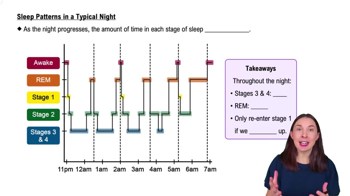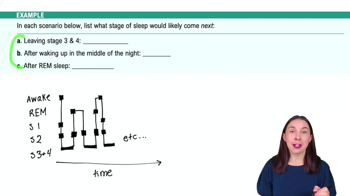Table of contents
- 1. Introduction to Psychology1h 43m
- 2. Psychology Research2h 20m
- 3. Biological Psychology2h 41m
- 4. Sensation and Perception28m
- 5. Consciousness and Sleep32m
- 6. Learning41m
- 7. Memory34m
- 8. Cognition37m
- 9. Emotion and Motivation35m
- 10. Developmental Psychology33m
- 11. Personality48m
- 12. Social Psychology41m
- 13. Stress and Health41m
- 14. Psychological Disorders44m
- 15. Treatment47m
5. Consciousness and Sleep
Sleep
Struggling with Psychology?
Join thousands of students who trust us to help them ace their exams!Watch the first videoMultiple Choice
A psychologist observes a group of 6-year-olds and a group of 10-year-olds during recess at school in order to assess changes in playgroup preferences between these two ages. This researcher's study uses a _____ design.
A
cross-sectional
B
longitudinal
C
cross-sequential
D
cross-longitudinal
 Verified step by step guidance
Verified step by step guidance1
Identify the key characteristics of each research design option: cross-sectional, longitudinal, cross-sequential, and cross-longitudinal.
Understand that a cross-sectional design involves observing different age groups at a single point in time to compare differences across ages.
Recognize that a longitudinal design involves observing the same group of individuals over an extended period to assess changes over time.
Note that a cross-sequential design combines elements of both cross-sectional and longitudinal designs, observing different cohorts over time.
Determine that the study described involves comparing two distinct age groups (6-year-olds and 10-year-olds) at one point in time, which aligns with a cross-sectional design.

 3:25m
3:25mWatch next
Master Circadian Rhythms with a bite sized video explanation from Hannah Gordils
Start learningRelated Videos
Related Practice


































































































![Race, Genes and IQ Differences | Bret Weinstein [Mini Clip]](https://img.youtube.com/vi/IztL_m3pd70/mqdefault.jpg)



































































































